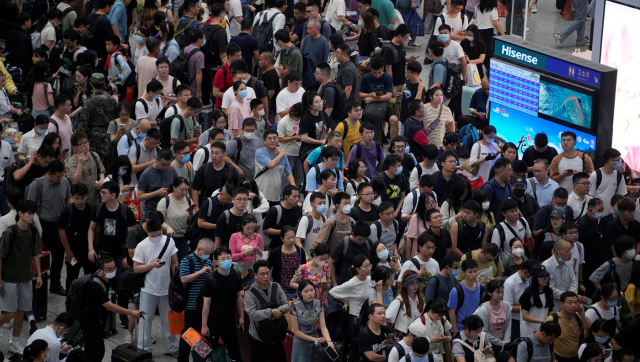This Golden Week holiday, a record number of Chinese people are choosing to stay at home instead of travelling, which could increase domestic consumption but dismays travel agencies who have been waiting for high-spending tourists to return to other countries since the pandemic ended. The Mid-Autumn Festival and National Day are celebrated in China from Friday through October 6 in what is this year’s longest public holiday. During the break, millions of people—mostly labourers and manufacturing workers—return to their hometown towns, along with a typical exodus of middle-class Chinese to foreign countries and a boom in domestic tourism. However, past holidays this year have failed in terms of expenditure per person as a sluggish job market and low earnings hinder consumer spending as the economy tries to recover from the pandemic. Even while more Chinese are still hesitant to spend money on nice-to-haves like vacations abroad, how much money they do spend domestically over the holiday will be a crucial indicator of consumer hunger and a key factor in the possible long-term growth of the world’s second-largest economy. According to the China Tourism Academy, which is a component of the Ministry of Culture and Tourism, “the most popular Golden Week in history” would see more than 100 million trips every day. According to flight app Umetrip, trains are anticipated to be busy and the average number of daily flights is also a fifth greater than the 2019 holiday. The first significant holiday since the lifting of all COVID-19 restrictions occurred during the Spring Festival break earlier this year, however travel was severely restricted due to the Covid-19 epidemic. According to Boon Sian Chai, managing director and vice-president of foreign markets for Trip.com, China’s largest online travel platform, the outbound market has only returned to roughly 60% of its pre-pandemic levels despite the fact that the data indicates a rise in internal tourism. The average cost of group travel tours from China is up to 30% more expensive than they were before the epidemic, in part because planes haven’t yet started operating according to their pre-COVID schedules, he added. China this month removed limitations on group tours for important travel markets including Japan, South Korea, and the United States, but Nancy Dai, China Market Analyst at ForwardKeys, predicted that international travel would be 48% lower in the fourth quarter than it was before COVID, citing visa challenges and other factors. Chinese travellers prefer less expensive Asian countries, with Thailand by far the most popular choice since it implemented a visa waiver programme, according to booking platforms and travel firms. More than any other nation, mainland Chinese travellers spent $255 billion abroad in 2019, with group tours believed to have contributed almost 60% of that amount. Retailers who yearn for these travellers’ return, however, will have to wait a little longer. (With agency inputs)
Even while more Chinese are still hesitant to spend money on nice-to-haves like vacations abroad, how much money they do spend domestically over the holiday will be a crucial indicator of consumer hunger and a key factor in the possible long-term growth of the world’s second-largest economy
Advertisement
End of Article


)

)
)
)
)
)
)
)
)



